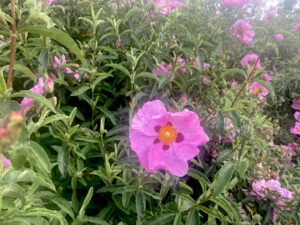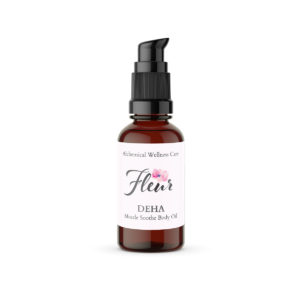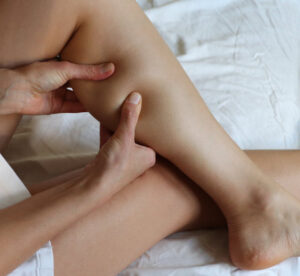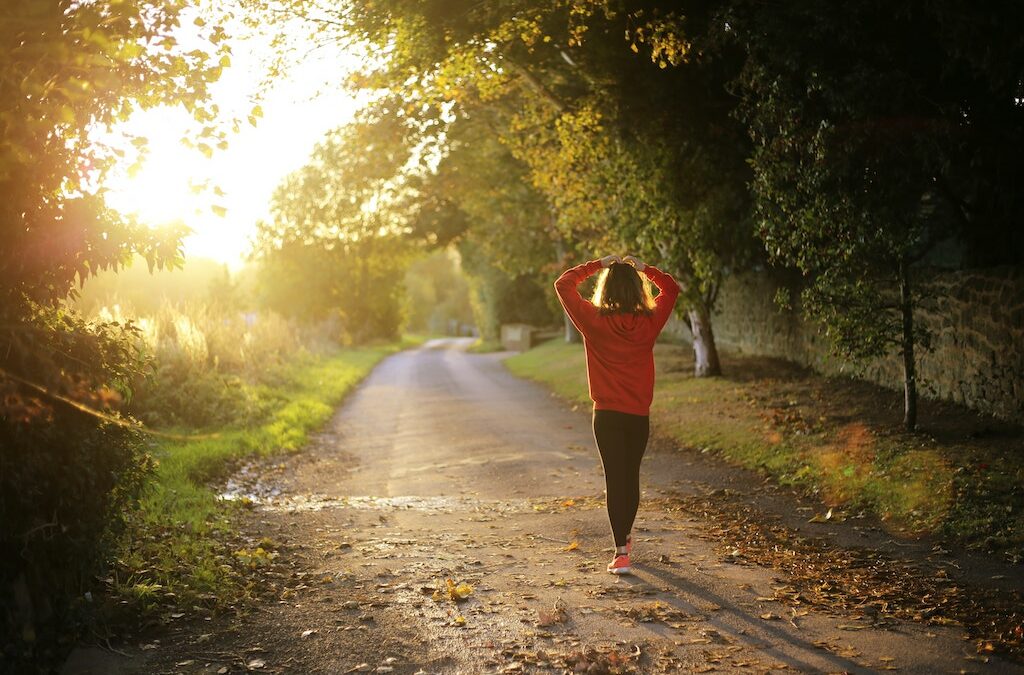“The beautiful spring came, and when nature resumes her loveliness, the human soul is apt to revive also”. –Harriet Ann Jacobs
Happy April!
The full glory of Spring has arrived! So many flowers are blooming around us — breathe their scents, and delight in their shapes and colors.
 Since our last rain, I’ve noticed that the beautiful lavender wisteria has begun to bloom. The Macadamia nut trees are flowering in my neighbor’s yard. Mexican Coral Trees, or “naked corals,” are beginning to show flame-like flowers on the tips of their twisting, often leafless branches. Yellow Daisies, coastal sunflowers, bright orange California poppies, rock rose (cistus), deer weed, salvias and coastal sage, and so much more are in full vibrant bloom along our coastal roadways.
Since our last rain, I’ve noticed that the beautiful lavender wisteria has begun to bloom. The Macadamia nut trees are flowering in my neighbor’s yard. Mexican Coral Trees, or “naked corals,” are beginning to show flame-like flowers on the tips of their twisting, often leafless branches. Yellow Daisies, coastal sunflowers, bright orange California poppies, rock rose (cistus), deer weed, salvias and coastal sage, and so much more are in full vibrant bloom along our coastal roadways.
By using awareness and paying attention to the vibrant power of nature, we can direct our senses toward that which may quickly restore the body, mind, and spirit, especially during times of stress, travel, or busyness.
In this blog, I invite you to “spring into life” with movement, noticing what’s growing and blooming in your environment and utilizing the healing power of flower essence aromatherapy for muscle aches due to moving your body.
Spring into Vibrancy with Movement
Did you know that April is “National Move More Month”?
Created by the American Heart Association, National Move Month aims to get more of us moving, encouraging an active lifestyle that includes 10,000 steps daily and a minimum of 20 minutes of aerobic exercise daily. What’s good for your body is good for your heart.
I believe that moving our bodies is the caring act of self-love and that combining mindfulness with any type of exercise is key to keeping motivated and inspired.
Physically moving all aspects of the body regularly is critical for endocrine health, as it can help balance hormones like cortisol, insulin, thyroid hormones, and sex hormones.
Physical movement is like anything good for you; the more regularly you do it, the more beneficial it will be. Whether you choose to start a solid exercise routine or choose simpler options, the goal for this month is to inspire you to move outdoors and hopefully keep you on a healthier track.
For all of us, being active has many benefits. Physical movement can reduce your risk of chronic diseases, improve mental health, and increase energy levels. It can
- Boost your mood
- Sharpen your mental focus
- Reduce your stress
- Improve your sleep
For aging adults, actively moving to keep fit has the potential to reduce symptoms of arthritis, anxiety, and depression and help keep diabetes and high blood pressure under control. Movement helps with memory retention, mental clarity, and focus too.
No matter what your fitness level is, there are ways that you can get moving and improve your health this month. Even if you haven’t been physically active for a while, there are ways to get started, and you can have fun too!
Yoga Update
For me, being active is a great way to maintain my physical and mental health so that I’m actively shaping my future. In a previous blog, I talked about The Struggles that Shape Us when I returned to my yoga mat at the beginning of January.
Slowly and with persistence, my body is reshaping itself. I’m progressing toward greater strength, better flexibility, mobility, and posture.
Now in my fourth month, I’ve discovered that no matter where I am or how full my schedule is, showing up on my mat at 6 am sets a positive tone for my day. My practice strengthens an inner resolve and discipline that also benefits all areas of my life.
I admit I’ve had to confront some fundamental assumptions about my high expectations regarding restoring my body after two years off my mat.
I have discovered that It has taken me longer to recover from the heat despite my focus on hydration before and after class. I’ve had to give myself more days between practice on my mat. Instead of 4 days a week practicing yoga, I might only do three days with two to three days in between. As I become more robust, I know that I’ll be able to increase my practice days.
I’ve learned that setting realistic goals and admitting to myself that what came easy for me a few years ago requires starting each practice with a beginner’s mind.
Of course, yoga’s real power lies in the practice’s multi-dimensional aspects. My focus on combining breath, movement, stretching, and strengthening is the perfect antidote to keep me from feeling stiff and disconnected whilst showing myself some love.
I’ll advance my practice over time through sweat, movement, and breath. With patience and self-care flower essence aromatherapy recovery, I liberate an integrated body and mind by refining various techniques on the mat that nurture muscle memory, build strength, and realign balance off the mat.
Consistency Not Perfection
In all movement endeavors, consistency is vital. Forming healthy habits will come from a combination of intention and repetition.
It is often said that establishing a routine takes roughly 21 days. Research suggests that synapses or connections between neurons in the brain form through the repetition of an action. The formation of a strong synapse is the difference between an action having to be premeditated or simply executed out of habit.
It’s why we repeat things when learning something new; repetition commits it to memory, making it habitual. Dedication to a movement practice is no different and offers HUGE results.
The Mind-Body Connection
The brain and body work together as a unified organism, inextricably linked and inseparable. All movement begins in the brain. Before you can move, you need to enact that movement in the brain to refine it.
The brain receives information from our visual, auditory, and tactile-kinesthetic systems. This means that moving the body is also training the mind to make a connection between the working memory and the body’s movement.
We take for granted that we can move through space efficiently, walking, bending, squatting, straightening, and balancing – until we can’t.
The connection between one’s physical health and brain health isn’t new. A recent study published in the journal Gerontology looked at leg power, particularly the largest body muscles that are strengthened by standing and walking, and concluded that “meaty, muscular legs are linked to a similarly powerful mind,” especially later in life.
I noticed that when my mother’s Alzheimer’s disease became more pronounced, she stopped moving. Her mood became more depressed and anxious. She had difficulty performing simple tasks like standing and walking. Her muscles wasted away and became atrophied from disuse – especially her glutes, thighs, and hamstrings. It was like watching her body become frozen. Sadly, in a quick span of a few years, her wasting body began to fold in on itself.
Let’s Put a Spring in Your Step
It’s hard to stay fit when you sit all day. So, how can you balance sitting with your fitness goals?
Walking is the easiest form of exercise to stay fit and reduce stress. On average, every minute of walking will extend the quality of your life experience.
As human beings, our bodies are designed for upright locomotion. Walking puts less strain on the lower back and creates less stress on joints such as the hips, knees, and ankles. Walking also helps us feel more grounded and balanced while clearing the mind.
Even a two-minute walking break from sitting can improve the function of disease-fighting and metabolism-boosting pumping. As little as 15 minutes of walking at a heart-pumping pace three times a week can help keep pounds off while supporting the body’s natural biological oscillation and parasympathetic rebound. Incorporating 30 minutes a day of walking several times a week will improve your life.
Some of my most reflective and productive creative thinking comes when I put a spring in my step by taking a walk. A big part of what determines implementing and sustaining a movement practice comes down to mindset.
“Perhaps the greatest purpose of a movement practice is to open up our capacity to have experiences that are profoundly meaningful.” — Rafe Kelley
Below are 5 tips to make healthy movement sustainable.
1. Make Movement a Priority
The key to fitness at any age is having a plan. Begin to view your movement practice as a priority instead of a to-do. This mindset shift plays a significant role in what you have to get done vs. what you get to do.
One way to stay motivated is to think of movement as something fun. Never think of it as something you have to do but as something you want to do. Making your health and well-being your first priority will establish a lasting foundation for resilience and feeling great!
2. Know Your Why?
Staying motivated can be challenging at times. Understand that movement provides energy and improves mind-body resilience.
This is why knowing your intention is crucial if you want to remain consistent. This also reduces the risk of succumbing to any limiting thoughts like, “I’m just too tired”, “I have too much to do”, or “It’s too late.”
I endeavor to maintain a morning movement practice intended for various reasons. Primarily, engaging my body through active movement helps me maintain agility and physical grace as I age. It takes about 25 minutes to stimulate your anabolic and metabolic systems to help build muscle and burn fat. Plus, I love getting up and out of the house before my obligations to others during the day.
Yoga keeps my spine supple and my muscles strong. Sweating helps to detoxify my body and boosts my metabolism. And twisting from the core helps tonify my inner organs and glands.
We need good balance to do just about everything, including walking, getting out of a chair, and leaning over to tie our shoes. Balance training involves doing exercises that strengthen the muscles that help keep me upright, including my legs and core. These kinds of exercises can improve stability and help prevent falls.
Weight-bearing training improves my bone density and improves my muscle tone. It also is essential for aging adults to exercise all aspects of their bodies. Strong muscles and being able to keep ourselves steady make all the difference in the many other things we do daily.
 Another favorite but simple movement activity is getting outside and walking on nearby trails along the lagoon. Something about the movement of arms and legs swinging free, walking tall with my head up, and the smell of the eucalyptus trees are like a balm for my body-mind.
Another favorite but simple movement activity is getting outside and walking on nearby trails along the lagoon. Something about the movement of arms and legs swinging free, walking tall with my head up, and the smell of the eucalyptus trees are like a balm for my body-mind.
3. Embrace Movement as Ritual
I’ve shared before that ritual has a beginning, middle, and end. When I approach my movement practice, I approach it with purposeful action with mindfulness.
Rituals help us to find happiness in the smallest of actions. Creating a ritual of movement is the ultimate form of well-being and self-care.
Allow yourself a movement ritual to be integrated into living in sync with your physical body. Ritualizing your time, environment, intention, and action creates consistency of purpose, making it a mindset of commitment.
Before I head out to my yoga class or take a walk, I drink a glass of water. Afterward, I drink more water. When I take my shower or indulge in my bath, I allow my thoughts to rest on how I feel and what I’ve accomplished. I thank myself for showing up and allow gratitude to wash over me. I finish by applying Deha Muscle Soothe and breathing in the soothing aroma. It is that simple.
Like any new ritual you create, it will require more effort in the beginning. However, when you recognize how it positively benefits you in your everyday life, movement habit becomes something you will look forward to.
4. Schedule It In Your Calendar
With busy lives, scheduling just 20-30 minutes daily for any kind of aerobic movement is helpful. Yes, it takes some effort to carve out time for exercise when you constantly juggle work, household chores, and other commitments—but it’s not impossible.
Invite your family and friends to join you. Walking can be done almost anywhere and anytime. Walking with a friend, partner, or child can help you build a stronger relationship with them.
5. Get a Massage for Sore Muscles
We all have our own self-care routines, but therapeutic massage could add many benefits to your overall welfare in your life.
Massage is one of the best and most relaxing modalities used to ease body pain. There’s no doubt about it; you will feel great again from the amazing benefits of massage. Massage helps by increasing blood circulation and helping the build-up of lactic acid or toxins to be released.
My personal preference is deep tissue massage, which is more firm to get at the knots and adhesions in muscle and fascia. But Swedish massage is more soothing for many, especially older adults and those starting a movement practice.
Regular massage therapy is a great way to address physical aches and pains and stimulate endorphins for improved mood.
I recently brought a bottle of Deha Muscle Soothe Body Oil for my massage therapist to use during my treatment. After a brief discussion about the organic ingredients, she was thrilled to provide flower essence aromatherapy. She loved the aroma and asked me to supply her with more to meet her other client’s needs.
But you don’t need to see a massage therapist to benefit from massage. Self-massage is a simple, convenient way to enjoy the benefits of massage. This can be done by yourself and can be an effective way to ease muscle tension
Flower Essence Aromatherapy Support for Muscle Soreness
Self-massage with essential oils is one of the most effective methods to relieve sore muscles and joints. One of the benefits of aromatherapy self-massage is how the essential oils work in tandem with massaging the muscles to relax both your mind and muscles.
Aromatherapy massage has a simple principle: to stimulate your senses and deliver pain relief to your tissues and muscles.
 Fleur Deha Muscle Soothe Body Oil is formulated with a synergy of tried and true organic pain-relieving ingredients. The essential oils in this blend are added to a base of jojoba and sunflower oils. Deha Muscle Soothe oil relieves temporary muscle soreness and also smells wonderful.
Fleur Deha Muscle Soothe Body Oil is formulated with a synergy of tried and true organic pain-relieving ingredients. The essential oils in this blend are added to a base of jojoba and sunflower oils. Deha Muscle Soothe oil relieves temporary muscle soreness and also smells wonderful.
Sweet Birch (Betula lenta)
Organic Sweet Birch essential oil is steam distilled from the bark of the tree. The oil has a pleasant, invigorating scent of wintergreen due to the chemical component methyl salicylate. Methyl salicylate is analgesic, anti-inflammatory, anti-spasmodic, rubefacient, and anti-rheumatic.
Commonly used to relieve pain, this oil excels at treating sore muscles, sprains, and painful joints due to its anti-inflammatory and antispasmodic properties. Methyl salicylate works by passing through the skin and entering the tissues, numbing pain, soothing spasms, cleansing, and purifying the tissues quickly.
Arnica Flower Extract (Infused in Sunflower Oil)
Arnica (Arnica montana) is one of my go-to homeopathic first-aid staples in my medicine cabinet. It has been used for medicinal purposes since the 1500s and is still popular today. Its pain-relieving properties are ideal for people who are prone to soft-tissue injuries or just starting a movement practice.
Arnica is used topically for a wide range of conditions, including bruises, sprains, muscle aches, wound healing, superficial phlebitis, joint pain, inflammation from insect bites, and swelling from broken bones.
The yellow petals of the arnica flowers have been solar-infused in Sunflower oil (Helianthus annus). As a carrier oil, Sunflower Oil is light and absorbs quickly into the skin.
Sweet Marjoram Oil (Organum majorana)
Organic Sweet Marjoram essential oil is steam distilled from the flowering plant. This essential oil excels when diluted in massage oil for muscular aches and pains, muscle spasms, arthritis, and rheumatism. This essential oil is slightly warming and provides a relaxing, soothing action that calms, and comforts inflamed muscles and joints.
Sweet Marjoram is very effective for leg aches and ‘charlie-horse’, arthritis, lumbago, cramps, and muscle spasms.
Roman Chamomile (Chameomeline nobile)
Steam-distilled from the flowers, organic Roman Chamomile essential oil helps to ease tired muscles after strenuous exercise and soothes aching joints due to aging. Its historical use has been utilized for thousands of years.
Highly regarded for its therapeutic properties, this essential oil is a natural anti-inflammatory healing agent. It has relaxing and sedative benefits and smells of apples and straw.
Other Essential Oil Favorites
Our alchemical blend also contains Lavender, Orange, and Black Pepper essential oils.
Lavender oil’s anti-inflammatory and analgesic properties effectively treat muscle stress and tension pains. It is excellent for relieving muscle spasms caused by overuse.
Aside from its stress-relieving and mood-enhancing benefits, Orange oil is also a natural anti-inflammatory, making it a natural remedy for decreasing swelling in the tissues, muscles, and joints.
Lastly, Black Pepper essential oil has warming and anti-inflammatory properties. Like many of the essential oils I’ve shared, this essential oil helps reduce pain from tired or injured muscles, easing cramps and tendonitis.
All essential oils in Deha Muscle Sooth Body Oil are alchemically blended with flower essences in a base of Jojoba oil for muscle and body-ache relief. Massage generously into your skin by gently kneading your muscles using slow, soft strokes.
The Self-Healing Action of Touch
 Pain receptors and pressure receptors cohabitate under your skin. Both types of receptors send signals to the brain. Physical pain is felt when unblocked pain waves are received by your brain.
Pain receptors and pressure receptors cohabitate under your skin. Both types of receptors send signals to the brain. Physical pain is felt when unblocked pain waves are received by your brain.
Massage activates thousands of pressure receptors under your skin. Applying moderate and deep pressure massage stimulates pressure receptors under your skin, which signals your body to stop producing the inflammation response.
When we use our hands to apply medium pressure to our bodies, the pressure receptors under the skin send signals to the brain to release serotonin, oxytocin, dopamine, and endorphins – our natural pharmacy. These neurotransmitters make us feel better, relieve our pain, and give us a sense of well-being.

